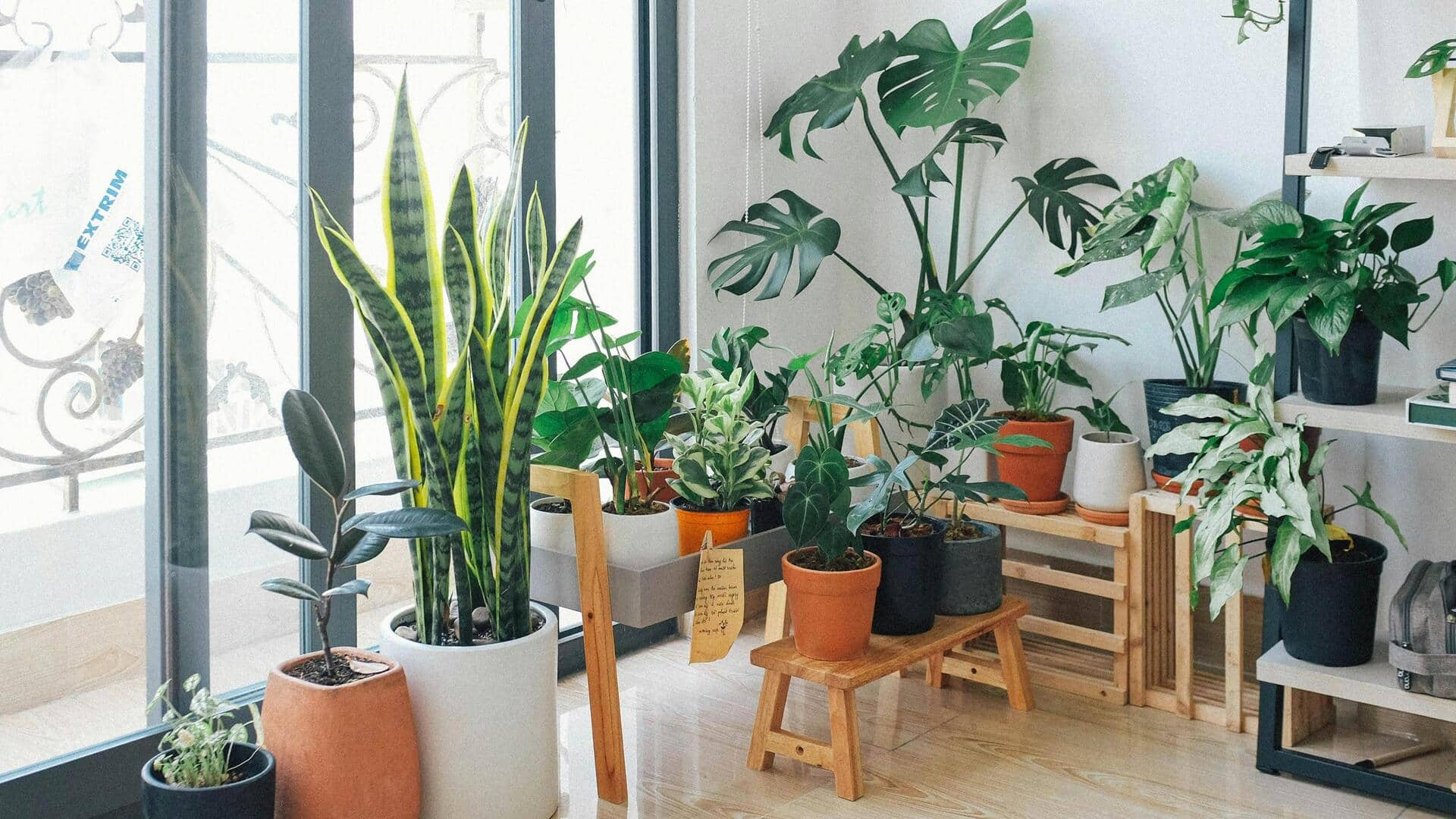
5 easy pruning tips to keep your indoor plants thriving
What's the story
Pruning is an essential part of keeping indoor plants healthy and thriving. It encourages new growth, removes dead or damaged leaves, and keeps plants in shape. By knowing the right techniques and timing, you can make sure your indoor plants stay vibrant. Here are five practical tips to prune your indoor plants efficiently, keeping them healthy and looking their best.
Tip 1
Use clean tools for pruning
Using clean tools is essential to avoid spreading diseases among your plants. Before you start pruning, make sure your scissors or shears are clean by wiping them with rubbing alcohol or soapy water. This simple step helps keep your plant's health by preventing harmful bacteria and fungi from entering through cuts.
Tip 2
Prune during the right season
The best time to prune most indoor plants is during their active growing season, which is usually spring or early summer. During this time, plants can recover faster from pruning stress and produce new growth more efficiently. Avoid heavy pruning during the dormant season as it can shock the plant and hinder its growth.
Tip 3
Remove dead or yellowing leaves first
Start by removing dead or yellowing leaves as they steal energy from healthy parts of the plant. These leaves also make the plant look less attractive. By getting rid of them first, you allow the plant to focus its energy on producing new leaves and maintaining overall health.
Tip 4
Trim sparingly for best results
While it may be tempting to give your plants a good trim, it's important to remember that less is more when it comes to pruning. Cutting too much at once can stress out the plant and slow down its growth. Instead, focus on making small cuts over time, targeting specific areas that need attention. This way, you encourage steady growth without overwhelming your plants.
Tip 5
Observe plant response after pruning
After you've pruned your indoor plants, keep a close eye on how they respond in the weeks that follow. Watch for signs of new growth or any signs of stress, such as wilting or discoloration. This observation will tell you if you need to change your pruning techniques in the future, ensuring that your indoor gardening practices remain effective and beneficial for your plants's health and appearance.